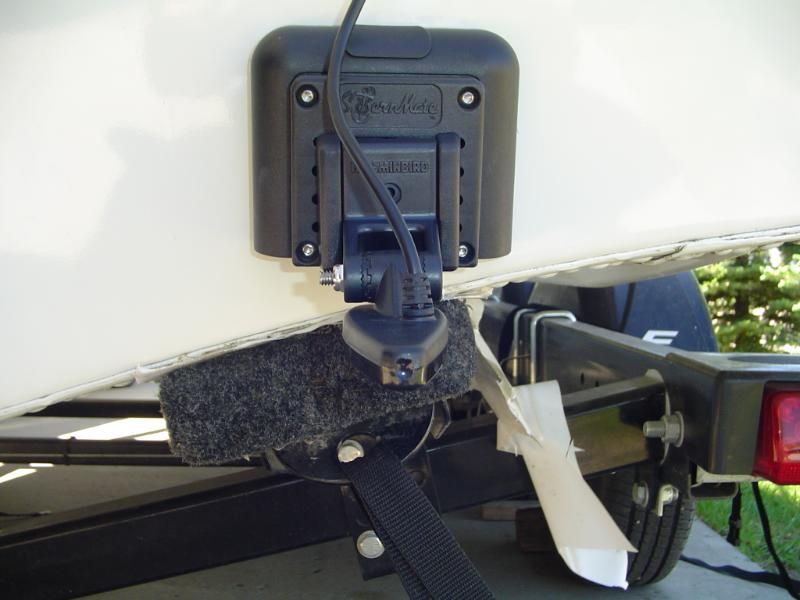Nervous here.
This past weekend I tackled the install for my depth finder. Hindsight I would have done things slightly different but this is what I went through. The transducer has a "hollow" plastic base that attaches to the boat with 2 screws. The back of the base isn't flat which made this more tricky because I couldn't just smear marine sealant onto it to help keep water away from the screw holes.
Holes were drilled as deep as whatever was asked for in the instructions using the right bit. I then tried to fill it with 4200 but wasn't able to get too much into the hole because it's a pretty small hole (covered the hole with sealant). I then covered the screws with 4200, went through the base and attached to the boat. I'm assuming that the 4200 on the screws would have "pulled back" out of the boat as the threads went into the hole. The hole was tight so that screw is in there tight. I then used 4200 and filled the back of the base as much as possible to prevent water from getting to the screw. This is where I'm nervous... the base is a half inch thick or so, I can't see where the screw touches the boat through the base. I'm only assuming that everything is covered with sealant.
Having said all of this, my worry is that somewhere I didn't get a tiny hole covered and water will slowly seap into the transom which will freeze and thaw throughout the winter and will ultimately make the transom brittle.
All other holes are fully covered and sealed good, not nervous about anything else, even the 5/8" hole that I drilled above the water line was clearly sealed. Everything sits under a built in swim platform type deal so I wasn't terribly concerned with the gooy mess that I left behind, please excuse that in the pic below.
My question is... did I do enough?? If I should have done something different I'm inclined to remove it from the boat and find a different way to mount it. All other holes had a flat surface touching the boat which was covered in 4200 and sealed well. The transducer screws are the only ones I can't see to tell 100% that they are good.
Thoughts? Am I doomed?? :facepalm: How will I know if water is seaping into the transom???

This past weekend I tackled the install for my depth finder. Hindsight I would have done things slightly different but this is what I went through. The transducer has a "hollow" plastic base that attaches to the boat with 2 screws. The back of the base isn't flat which made this more tricky because I couldn't just smear marine sealant onto it to help keep water away from the screw holes.
Holes were drilled as deep as whatever was asked for in the instructions using the right bit. I then tried to fill it with 4200 but wasn't able to get too much into the hole because it's a pretty small hole (covered the hole with sealant). I then covered the screws with 4200, went through the base and attached to the boat. I'm assuming that the 4200 on the screws would have "pulled back" out of the boat as the threads went into the hole. The hole was tight so that screw is in there tight. I then used 4200 and filled the back of the base as much as possible to prevent water from getting to the screw. This is where I'm nervous... the base is a half inch thick or so, I can't see where the screw touches the boat through the base. I'm only assuming that everything is covered with sealant.
Having said all of this, my worry is that somewhere I didn't get a tiny hole covered and water will slowly seap into the transom which will freeze and thaw throughout the winter and will ultimately make the transom brittle.
All other holes are fully covered and sealed good, not nervous about anything else, even the 5/8" hole that I drilled above the water line was clearly sealed. Everything sits under a built in swim platform type deal so I wasn't terribly concerned with the gooy mess that I left behind, please excuse that in the pic below.
My question is... did I do enough?? If I should have done something different I'm inclined to remove it from the boat and find a different way to mount it. All other holes had a flat surface touching the boat which was covered in 4200 and sealed well. The transducer screws are the only ones I can't see to tell 100% that they are good.
Thoughts? Am I doomed?? :facepalm: How will I know if water is seaping into the transom???





















